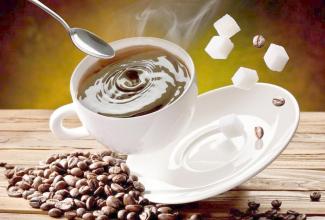Dominica boutique coffee bean flavor taste the characteristics of the manor producing area Santo Domingo coffee
There are four kinds of coffee trees in the world, but the coffee we drink now is mainly the fruit of two kinds of coffee trees, one is Arabica, the other is Robasta.
Coffee trees in Arabica are not easy to grow, many are on high-altitude slopes, and picking needs to be done manually. But it is better to have a balanced taste and less caffeine. And Robasta is relatively easy to grow, a variety of heat-resistant, cold-resistant, moisture-resistant, drought-resistant, disease-resistant. Once upon a time, coffee in Vietnam was planted by Robasta because of leaf rust and all the coffee trees planted in Arabica died. In addition, Rothbata is also relatively easy to harvest, in addition to manual vibration machines can also be competent. This variety has all kinds of benefits, but what is fatal is that the coffee beans produced are poor in aroma, lack of bitterness, lack of acidity, and high caffeine content, so they are mostly used to make instant coffee. Now most of the beans on the market are carefully selected from Arabica in this way, and the high-quality Dominican coffee emits a faint aroma that gives people a faint fruity aroma, a lingering finish and a smooth and smooth finish.
Dominica coffee beans (Caribbean)
Coffee in Dominica is grown in highlands and lowlands, and its taste is slightly different. The upland is sour, but the taste is rich; the lowland is less sour and tastes smoother. Boutique coffee has become popular in recent years. High-quality coffee beans produced by some Dominican estates have a rich aroma, mellow taste and moderately bright sour taste, which are not far from the more famous Puerto Rico beans or Jamaican beans, and are also worth tasting. Dominica coffee beans are mild in acidity and have a rich fruity flavor.
In the west of Hispaniola, the harvest in the mountains above 1500 meters above sea level, the rich coffee Republic of Dominica (Dominican Republic) is adjacent to Haiti, both of which own the island of Hispaniola (Hispaniola). The best place to produce is the Barahona region in the southwest, but Juncalito and Ocoa also produce a fine coffee, Santo Domingo coffee, which is characterized by freshness and elegance, fullness, excellent acidity and pleasant aroma, so it is worth it. Unlike coffee produced in Haiti, most of the coffee grown in the Dominican Republic has been washed, which is a symbol of high quality

Important Notice :
前街咖啡 FrontStreet Coffee has moved to new addredd:
FrontStreet Coffee Address: 315,Donghua East Road,GuangZhou
Tel:020 38364473
- Prev

Jasmine fragrant Yega Chuefei Coffee Woka Coffee Flavor Coffee
Yega snow coffee has always been famous in the eyes of coffee connoisseurs all over the world. the rare washed high-quality Elaraby plus coffee is suitable for all degrees of roasting, showing a fresh and bright aroma of flowers and fruits, beautiful and complete bean shape. is the general mocha is incomparable to the high-end coffee. This coffee has a unique aroma, showing the flavor of citrus and lemon and the fragrance of jasmine, with soft medium roasting.
- Next

Flavor and taste of Mexican coffee with low acidity the characteristics of boutique coffee beans Aldura
Mexican coffee-growing areas are mainly concentrated in the southeastern highlands, near Guatemala. Most of the mountains in the south are volcanic areas, and the volcanic ash soil is not only conducive to the drainage of coffee roots, but also provides sufficient nutrients for the growth of coffee trees. Most of the coffee varieties planted are Kaddura, Tibica, bourbon, etc., and the treatment methods are mostly water washing treatment, which are classified according to altitude. Coffee beans
Related
- Detailed explanation of Jadeite planting Land in Panamanian Jadeite Manor introduction to the grading system of Jadeite competitive bidding, Red bid, Green bid and Rose Summer
- Story of Coffee planting in Brenka region of Costa Rica Stonehenge Manor anaerobic heavy honey treatment of flavor mouth
- What's on the barrel of Blue Mountain Coffee beans?
- Can American coffee also pull flowers? How to use hot American style to pull out a good-looking pattern?
- Can you make a cold extract with coffee beans? What is the right proportion for cold-extracted coffee formula?
- Indonesian PWN Gold Mandrine Coffee Origin Features Flavor How to Chong? Mandolin coffee is American.
- A brief introduction to the flavor characteristics of Brazilian yellow bourbon coffee beans
- What is the effect of different water quality on the flavor of cold-extracted coffee? What kind of water is best for brewing coffee?
- Why do you think of Rose Summer whenever you mention Panamanian coffee?
- Introduction to the characteristics of authentic blue mountain coffee bean producing areas? What is the CIB Coffee Authority in Jamaica?

